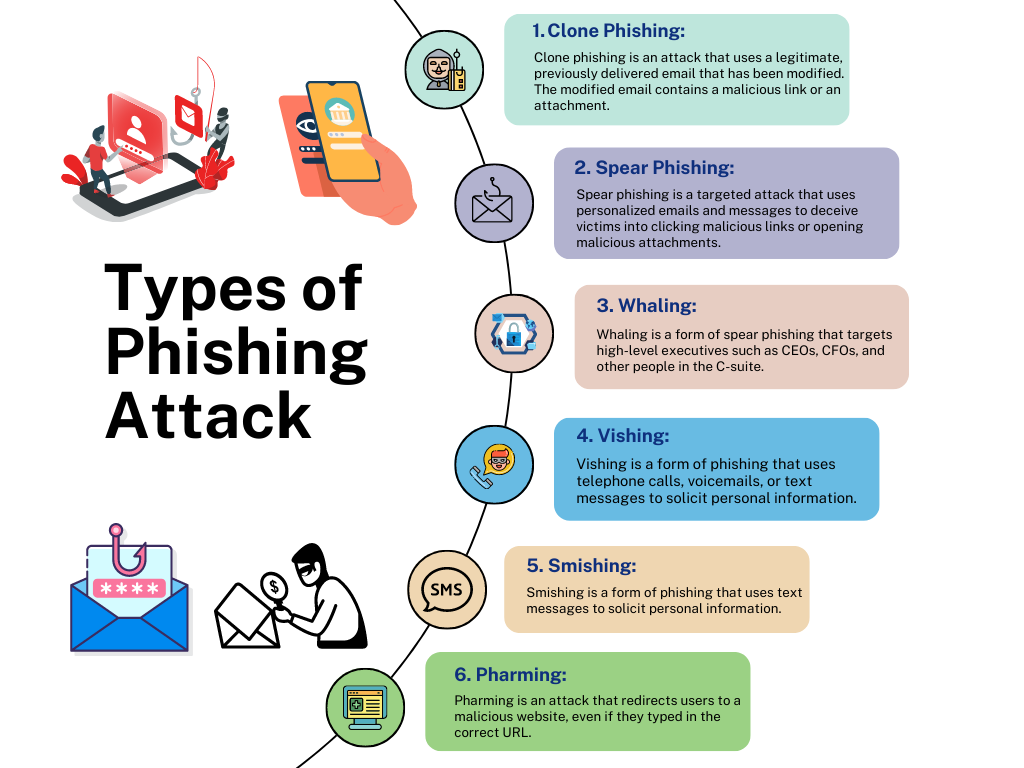Phishing Attacks
Phishing attacks are cyber-attacks that use deceptive emails or websites designed to steal personal information. They often use fake emails, websites, or links to malicious websites to trick victims into entering personal information such as banking details, passwords, credit card numbers, or other sensitive information. Phishing attacks can also lead to identity theft, financial losses, and other forms of fraud.

How to prevent Phishing Attacks
- Be aware of suspicious emails: Be on the lookout for emails from unfamiliar sources or emails that contain strange requests or typos.
- Don’t click on links: Don’t click on links in emails or text messages unless you are sure they are from a trusted source.
- Use two-factor authentication: Two-factor authentication adds an extra layer of protection by requiring you to enter a code sent to your phone or email address in addition to your password.
- Use secure passwords: Make sure your passwords are secure and not easy to guess.
- Install security software: Install and regularly update security software to protect your computer from malicious software.
Statistics of Phishing Attacks
According to statistics from the Anti-Phishing Working Group, there were more than 1.8 million phishing attacks reported in 2018. These attacks resulted in more than 350,000 reported data breaches, with an average cost of $1.6 million per breach. The group also found that more than 80 percent of phishing attacks targeted businesses, with the majority of them targeting financial institutions.
In India, the number of phishing attacks has been increasing over the years. According to a recent report by the Indian Computer Emergency Response Team (CERT-In), the number of phishing attacks increased by over 275 percent in 2018 as compared to 2017. The report noted that most of the phishing attacks targeted banking and financial institutions, followed by educational institutions. CERT-In also found that more than 50 percent of the phishing attacks were targeted at Indian users.
GET STARTED
.jpg)
.jpg)

.jpg)


.png)